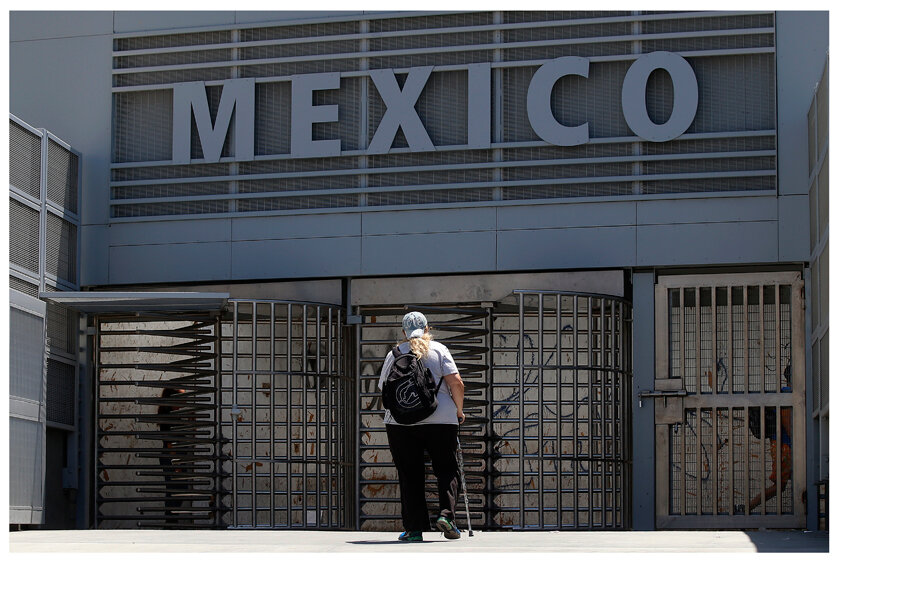Why it's Mexico's turn to tighten the US border
Loading...
Just as presidential candidate Donald Trump has declared his intention to make Mexico pay for a wall across the US-Mexico border, Mexican authorities have gone ahead and added their own border security measures – and this time, the fugitives they're looking for are American, officials said.
Late on Wednesday, pedestrians making the San Ysidro crossing from San Diego to Tijuana were the first to experience the new checks. Travelers are separated into two lines: one for Mexicans, who are allowed to pass through unchecked, and another for foreigners, who must show their passports and submit entry forms to agents waiting at inspection booths. Those intending to stay longer than a week are also now required to pay a fee of about $20.
The process is similar to what you’d expect at any international airport, but this new distinction – announced by the opening of a $6.9 million facility – “represents a new way of doing business at the border for Mexico, as the federal government seeks control of who comes into the country,” reports The San Diego Union-Tribune.
Beforehand, visitors had “generally entered Mexico unencumbered along the 1,954-mile border,” reported The Associated Press.
The San Ysidro crossing is the busiest border connection between the US and Mexico, with around 22,000 travelers passing through each day, according to the Tribune.
“The way that people enter Mexico has been growing very disorganized, and now we are making it organized, that’s the big difference,” Carlos de la Fuente, who oversees construction for Indaabin, the Mexican agency in charge of building federal facilities, told the Tribune.
In recent decades, a more pressing problem has also emerged, with the fact that Mexico is often seen as a cheap and convenient destination for criminals on the lam. Most recently, it was revealed that New York prison escapees Richard Matt and David Sweat had been planning to make their way to the country before they were captured, reported The Christian Science Monitor.
This year alone, more than 120 Americans who were expelled from the Mexican state of Baja California had arrest warrants in the US, reported the AP. Some of the deportees last year were named as the FBI’s most wanted.
Now, border security will be able to cross-check visitors' information with international criminal databases.
“This is about putting our house in order,” Rodulfo Figueroa, Mexico's top immigration official in Baja California, told the AP.
Some have expressed resistance to increasing security checks, arguing it would drive down business from American visitors.
But Mr. Figueroa emphasized that agents would use their discretion to keep wait times down. “If the line becomes clogged up, we will just let everybody through,” he said. “If we can't check everybody, we won't.”
The updated checkpoint is expected to expedite the overall processing time, he added. While the number of visitors processed per day is currently around 50, in time Mexican authorities will be able to wave through 1,000 – and potentially many more, as other border crossings are updated.
This report contains material from The Associated Press.






